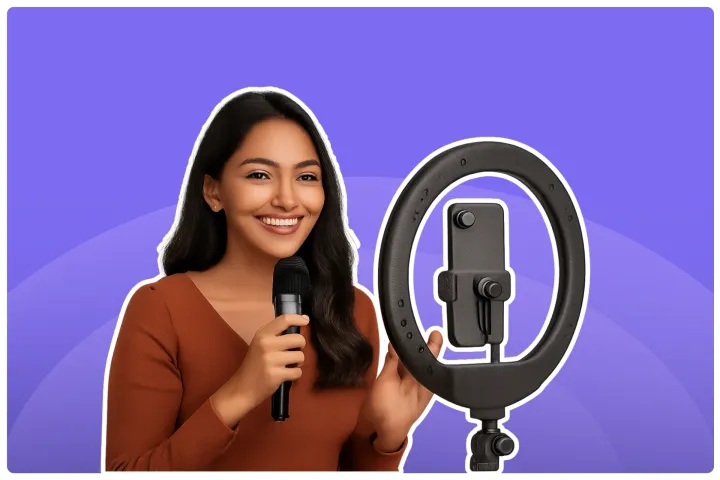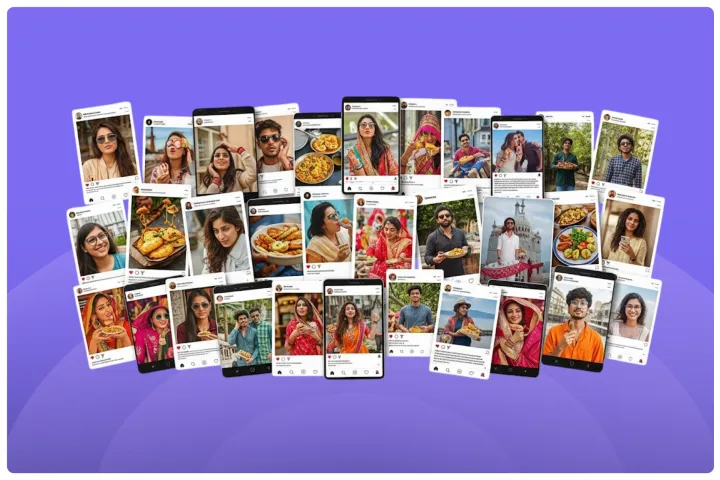User Generated Content Vs Brand Generated Content (2025)
Curious about user-generated vs. brand-generated content? Get insights on how each type can impact your marketing efforts and audience connection.

Feeling stuck in a content rut? You're pumping out beautiful, professional posts, but the engagement just isn't what you hoped for. On the other hand, you see your customers sharing amazing photos with your products, and you wonder, "How can I use that?"
You're in the right place. Today, we're diving deep into two powerful types of content: User-Generated Content (UGC) and Brand-Generated Content (BGC). We'll break down what they are, when to use them, and how to create a winning strategy that uses the magic of both. Let's get your brand the buzz it deserves!
User-Generated Content vs. Brand-Generated Content
Let's start with the basics. Think of your marketing content like a conversation. Are you the only one talking, or are your customers joining in?
What is User-Generated Content (UGC)?
User-Generated Content is any content—text, videos, images, reviews—created by people, rather than brands. Think of it as digital word-of-mouth. When a customer posts an unboxing video of your product on their Instagram, that's UGC. When a fan leaves a glowing review on your website, that's UGC. It's authentic, it's real, and it comes straight from the people who love your brand.
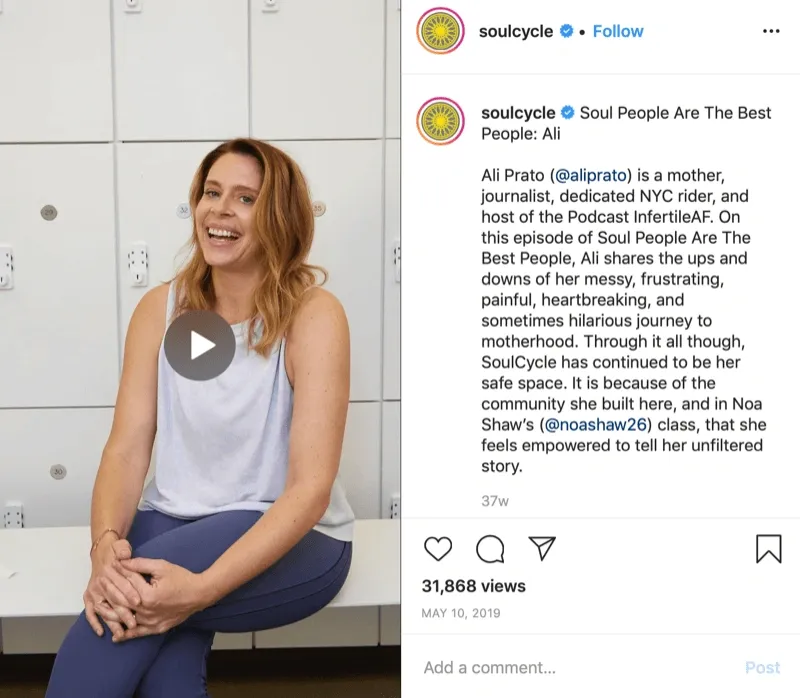
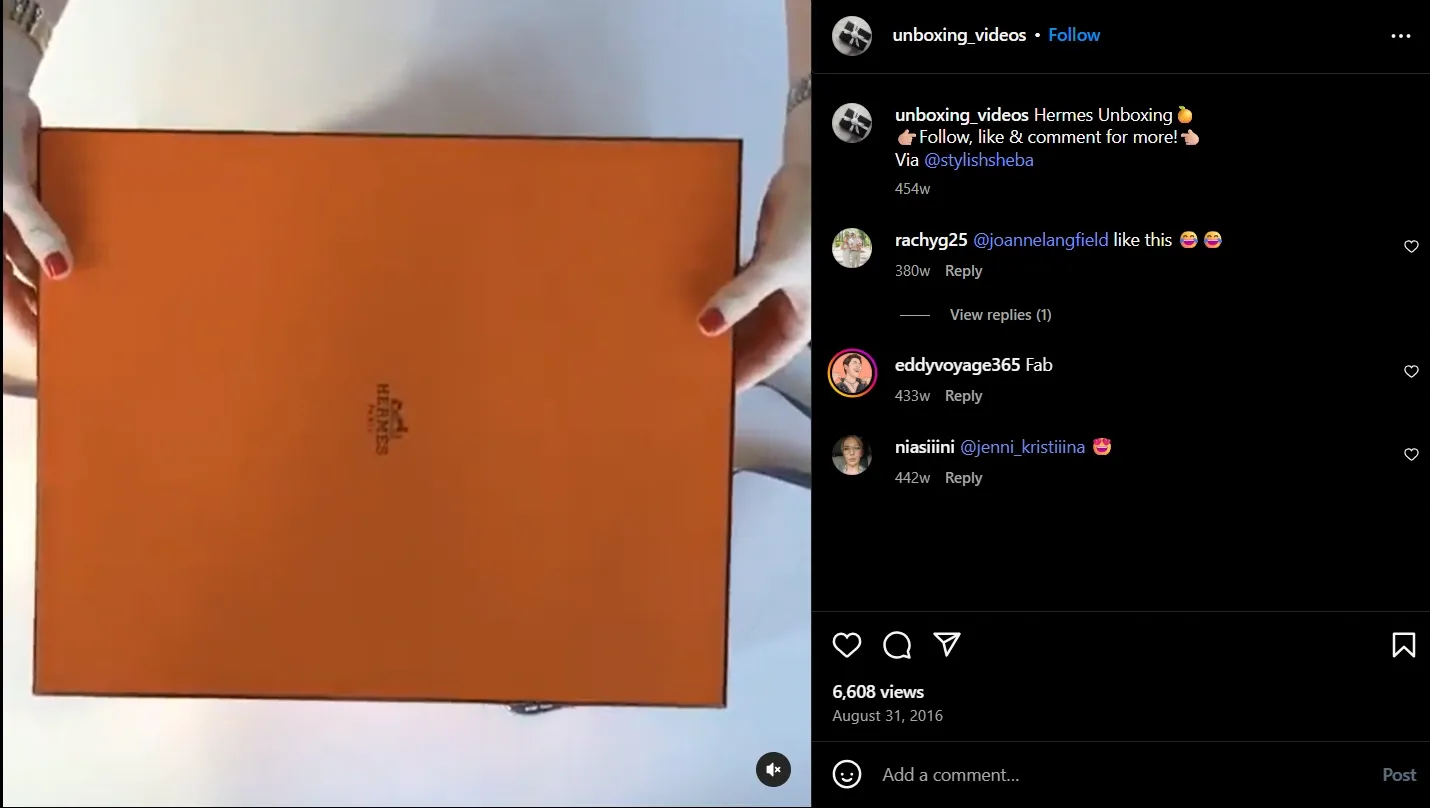
What is Brand-Generated Content (BGC)?
Brand-Generated Content is everything you create in-house. It’s your official voice. This includes your professional product photoshoots, the graphics you post on social media, your blog articles, and your polished video ads. BGC is all about control—you shape the message, the visuals, and the overall vibe to be perfectly on-brand.
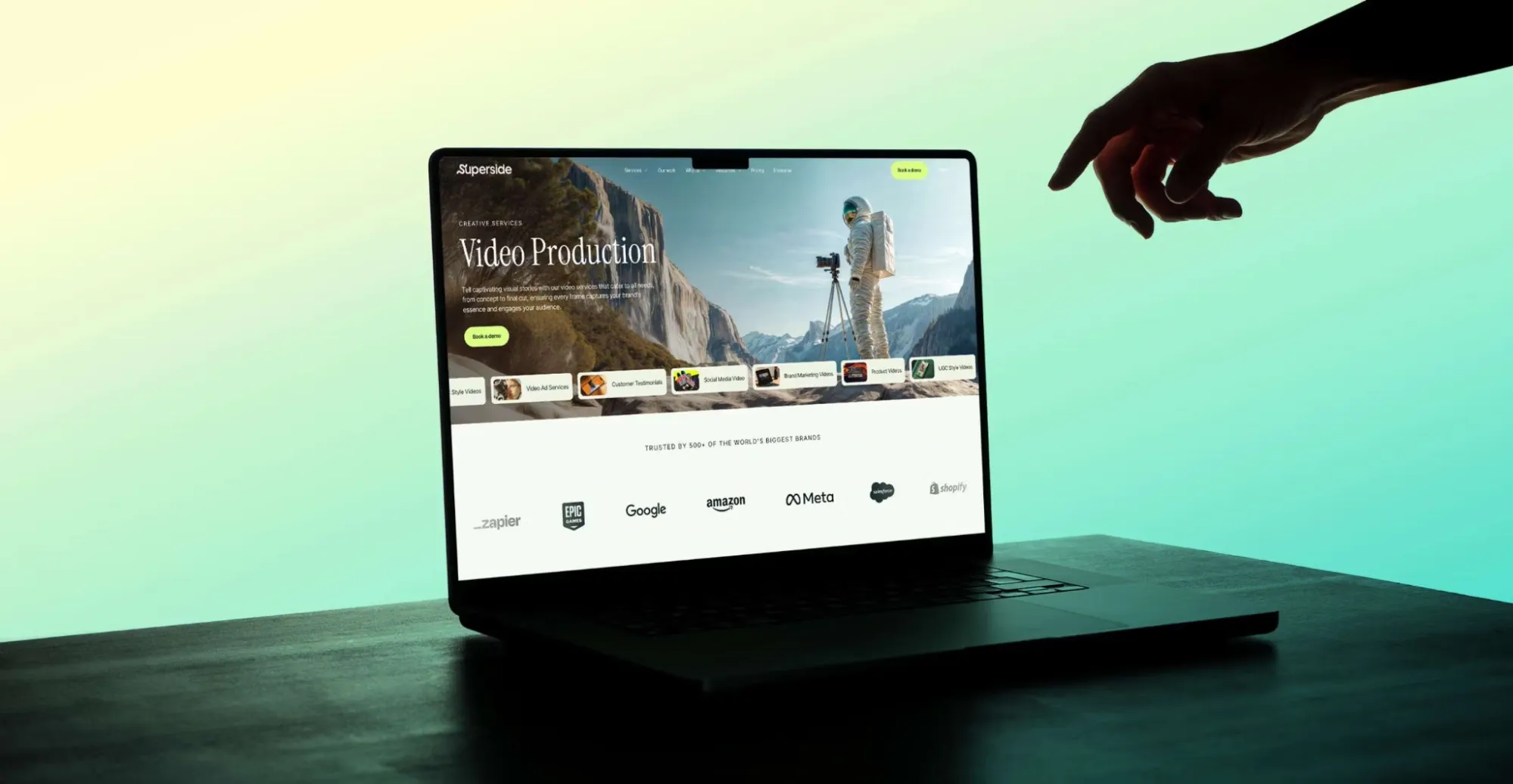

User-Generated Content vs. Brand-Generated Content: The Pros and Cons
Both UGC and BGC have their superpowers and their weak spots. Knowing them helps you decide how to balance your strategy.
User-Generated Content (UGC)
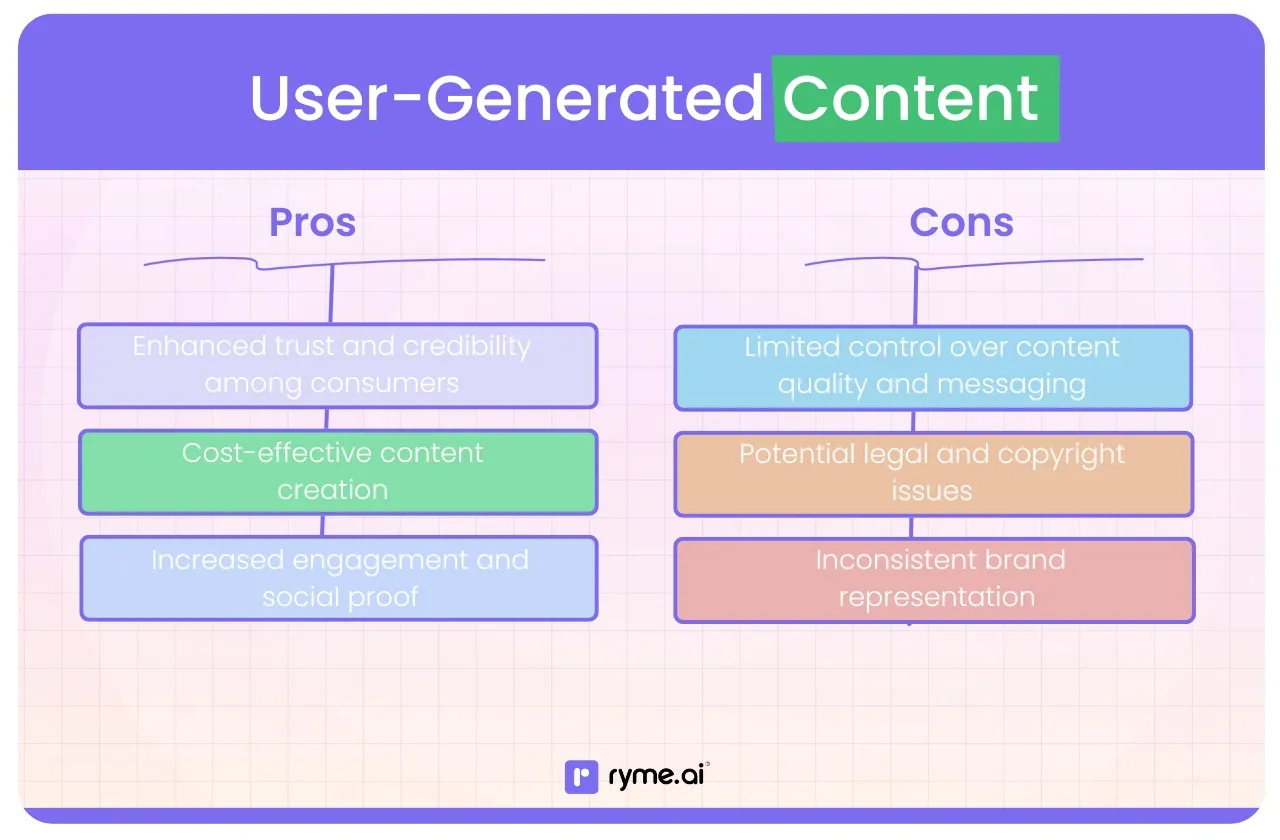
The Pros (Why You'll Love It! ❤️)
- Sky-High Authenticity & Trust: This is UGC's biggest win. People trust people more than they trust brands. In fact, a whopping 92% of consumers trust recommendations from their peers over any other form of advertising. When a potential customer sees a real person enjoying your product, it feels genuine and instantly builds credibility.
- Super Cost-Effective: Creating high-quality content can be expensive. UGC is often free! Your customers and fans are creating it because they genuinely love what you do. This can save your marketing budget thousands, or even lakhs, of rupees.
- Engagement Through the Roof: UGC is a conversation starter. When you share a customer's post, it not only makes that customer feel special but also encourages others to share their own content. Recent data shows that mixing professional content with UGC can boost brand engagement by 28%.
- Provides Social Proof: UGC acts as a powerful signal that your product is worth buying. It shows that real people are using and loving it, which helps new customers feel more confident in their purchasing decisions.
The Cons (What to Watch Out For! ⚠️)
- Less Control: You can't dictate the quality or the message of UGC. Sometimes the lighting might be off, or the caption might not be exactly what you'd write.
- Quality Can Vary: Not every customer is a professional photographer. You’ll get a mix of amazing shots and some not-so-great ones. Curation is key.
- Legal & Rights Issues: You must always get permission before reposting a customer's content. Using someone's photo without their consent can lead to serious legal trouble. (Don't worry, we'll cover how to handle this!)
Brand-Generated Content (BGC)
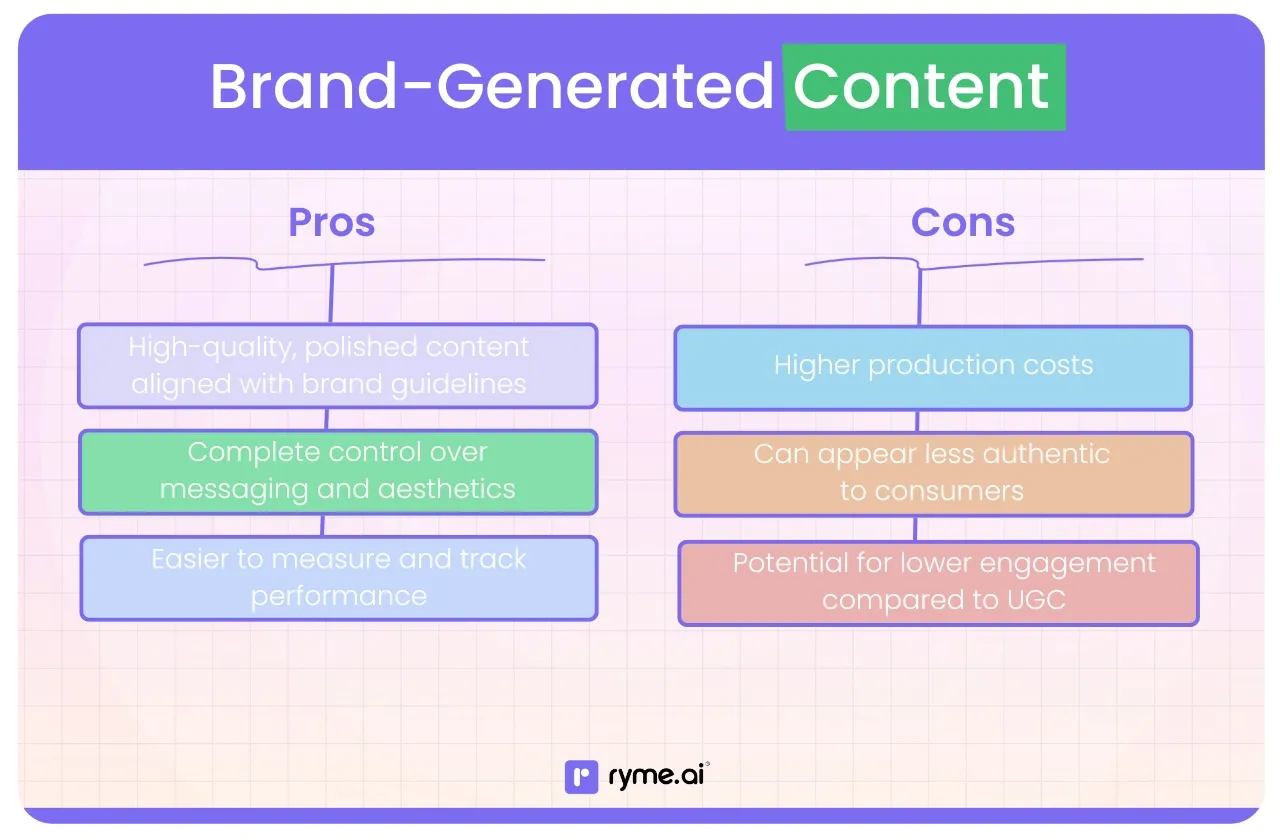
The Pros (Your Brand, Your Rules! 👑)
- Total Message Control: With BGC, you control the narrative. You can ensure every image, video, and piece of copy aligns perfectly with your brand's voice, values, and marketing goals.
- Consistent High Quality: You hire the photographers, you direct the shoots, and you approve the final edits. BGC guarantees a professional and polished look that reinforces your brand's quality.
- Perfect for Launches & Announcements: When you're launching a new product or announcing a major update, BGC is the best way to deliver a clear, concise, and impactful message.
- Easy to Plan: You can schedule and create BGC according to your marketing calendar, ensuring a steady stream of content for your channels.
The Cons (Where It Can Fall Short! 📉)
- Can Be Seen as "Salesy": Today's consumers are smart. They can spot an ad from a mile away. Overly polished BGC can sometimes come across as less trustworthy than authentic UGC. Consumers find UGC up to 2.4 times more authentic than brand-created content.
- It Costs Money (and Time!): Professional photoshoots, videographers, graphic designers, and copywriters all come at a cost. BGC requires a dedicated budget and significant planning.
- Lower Engagement: Because it's less personal, BGC sometimes struggles to get the same level of likes, comments, and shares as a relatable piece of UGC.
Combining User Generated Content and Brand Generated Content
So, who wins the battle of UGC vs. BGC? Neither! The smartest brands know that the real magic happens when you combine them.
Think of it this way: BGC builds the foundation of your brand's image, and UGC brings it to life with real stories and authentic voices.
Benefits of Integration:
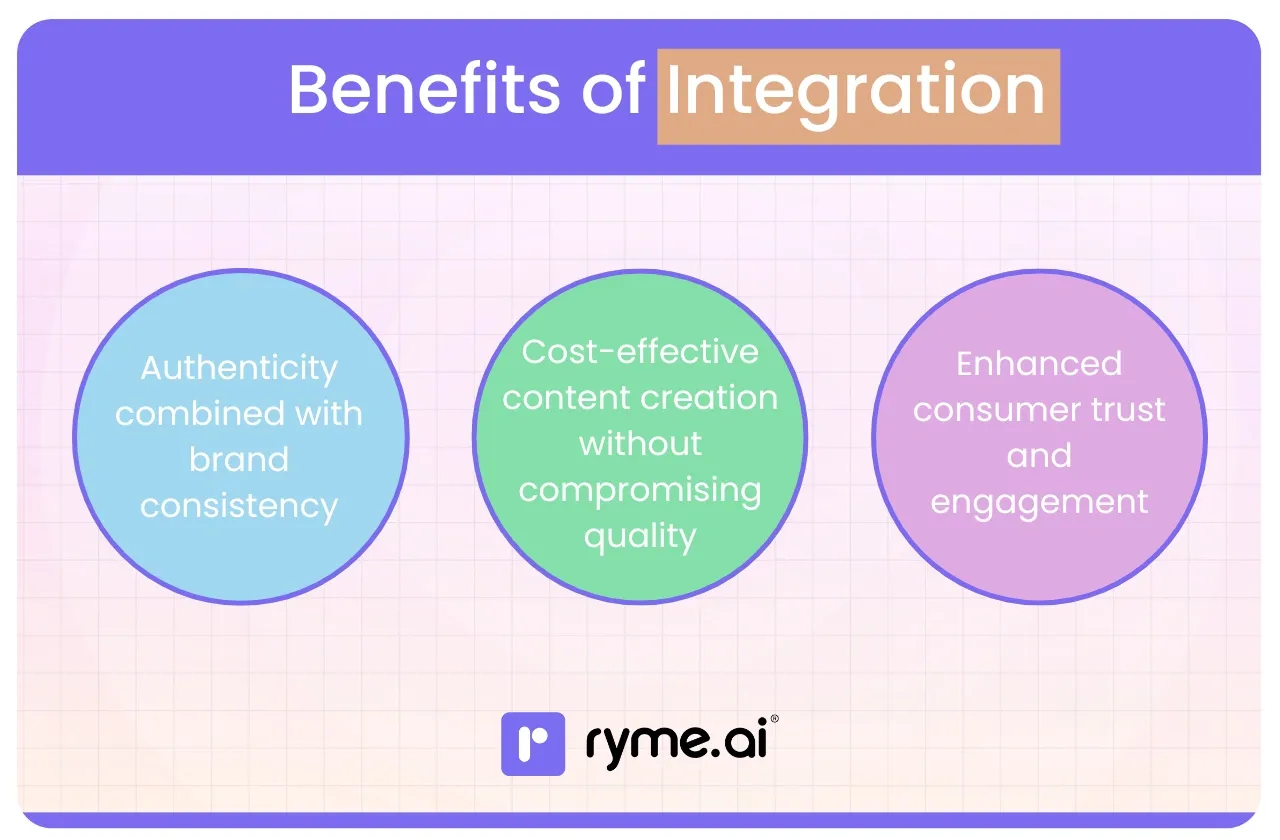
- The Best of Both Worlds: You get the authenticity and trust of UGC combined with the polish and control of BGC.
- A Richer Content Mix: Your social media feeds become more interesting and dynamic, featuring a mix of professional shots and real-life customer moments.
- Builds a Stronger Community: By featuring your customers, you turn them into brand advocates. They feel seen and appreciated, which deepens their loyalty.
Implementation Tips:
- Set the Stage with BGC: Use high-quality brand content to establish your aesthetic and key brand messages.
- Invite Participation with UGC: Run campaigns that actively encourage customers to share their experiences.
- Showcase UGC Alongside BGC: Don't hide your UGC on a separate tab. Mix it directly into your main feed to show that you value your customers' contributions.
ryme.ai: Bridging the Gap Between UGC & BGC
Okay, so you're sold on the hybrid approach. But managing it all sounds like a lot of work, right? Finding creators, getting permissions, tracking results... it can be overwhelming.
This is where a smart platform can change the game.
Why is a platform like ryme.ai useful in this context?
ryme.ai is designed to simplify and supercharge your creator marketing, which includes both influencer-led UGC and managing organic customer content. It acts as your central hub, making it easy to find the right people, manage campaigns, and see exactly what's working. It takes the chaos out of the process and replaces it with streamlined efficiency
Key Features Beneficial to Brands (ryme.ai)
- Creator Discovery: Find the perfect influencers and UGC creators based on niche, engagement rates, audience demographics, and more.
- Campaign Management: From briefing creators to approving content, manage the entire workflow in one place.
- Automated Payouts: Handle payments in Indian Rupees (₹) seamlessly without any hassle.
- Advanced Analytics: Get detailed reports on your campaign's ROI, so you know exactly how your investment is performing.
Addressing Common Pain Points (with ryme.ai)
Let's get real about the challenges brands face and see how a tool like ryme.ai can be your helpful friend.
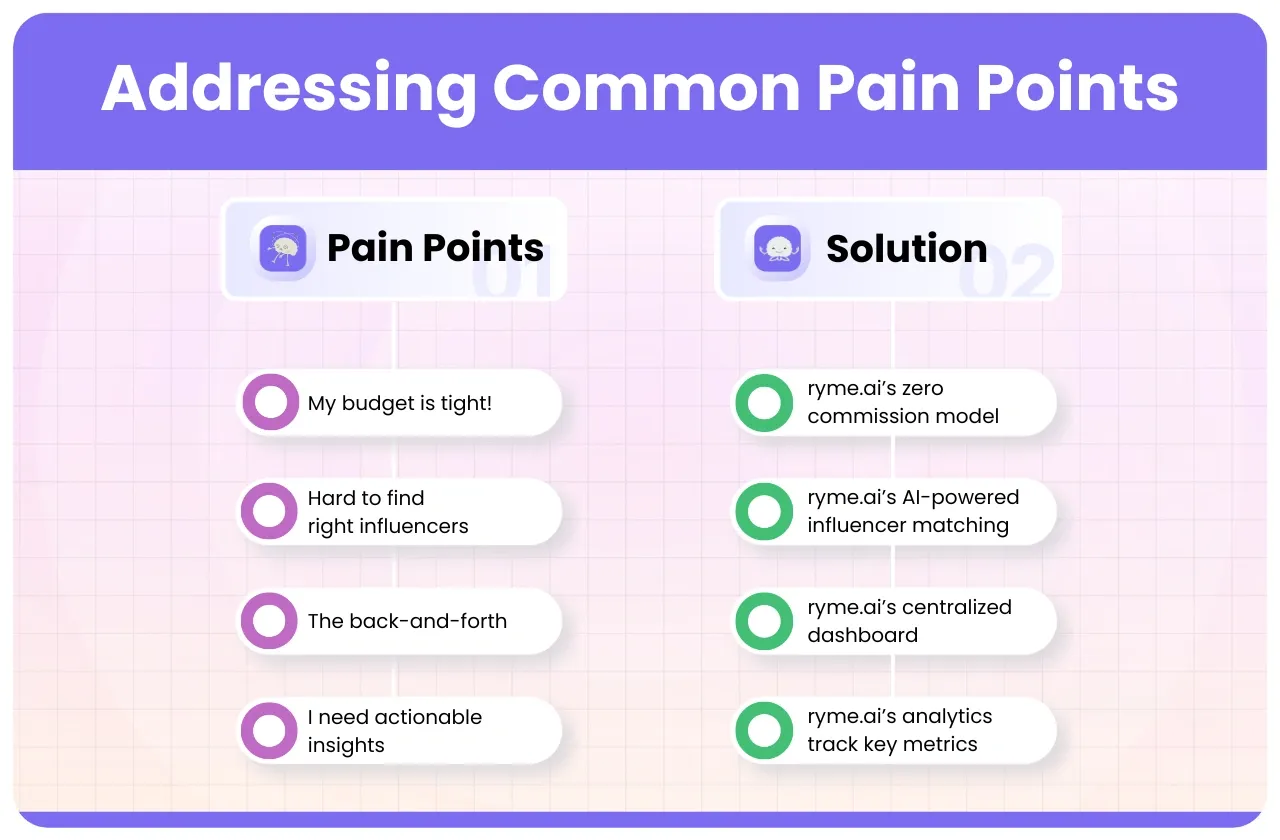
Pain Point: "My budget is tight! Influencer marketing seems too expensive." 😟
The ryme.ai Solution: You don't need a massive budget to get started. The trend in India for 2024 is shifting towards micro and nano-influencers. These creators have smaller, highly engaged communities that trust them deeply. With ryme.ai's discovery tool, you can find these affordable yet powerful creators who offer a much better ROI. You can start a campaign for as little as ₹5,000-₹10,000!
Pain Point: "Finding the right influencers who genuinely fit my brand is like finding a needle in a haystack!" 🧐
The ryme.ai Solution: Stop endless scrolling! Use precise filters on ryme.ai to find creators who match your brand's values and aesthetic. You can search by niche (like fashion, food, or fitness), location (find creators in Mumbai or Bangalore), engagement metrics, and more. This ensures you partner with people whose audience is actually interested in what you offer. For more tips, check out how to find your brand's perfect match in our guide on the impact of influencer marketing on consumer behaviour.
Pain Point: "The back-and-forth for content approval takes forever! Campaigns get so delayed." 🐌
The ryme.ai Solution: Say goodbye to messy email chains and WhatsApp threads. ryme.ai provides a centralized dashboard where creators submit content for your review. You can provide feedback, request changes, and give final approval all in one place. This streamlined process cuts down delays and gets your campaigns live, faster.
Pain Point: "I'm spending money, but am I getting results? I need actionable insights, not just vanity metrics!" 📊
The ryme.ai Solution: This is crucial. According to a recent report, 83% of brands in India now prioritize measuring the ROI of their influencer campaigns. ryme.ai's analytics dashboard gives you the data you need. Track clicks, conversions, engagement rates, and earned media value. You'll get a clear picture of what’s working, allowing you to optimize your strategy and justify your marketing spend.
Best Practices for Implementing UGC and BGC
Ready to build your hybrid strategy? Here are some best practices to follow.
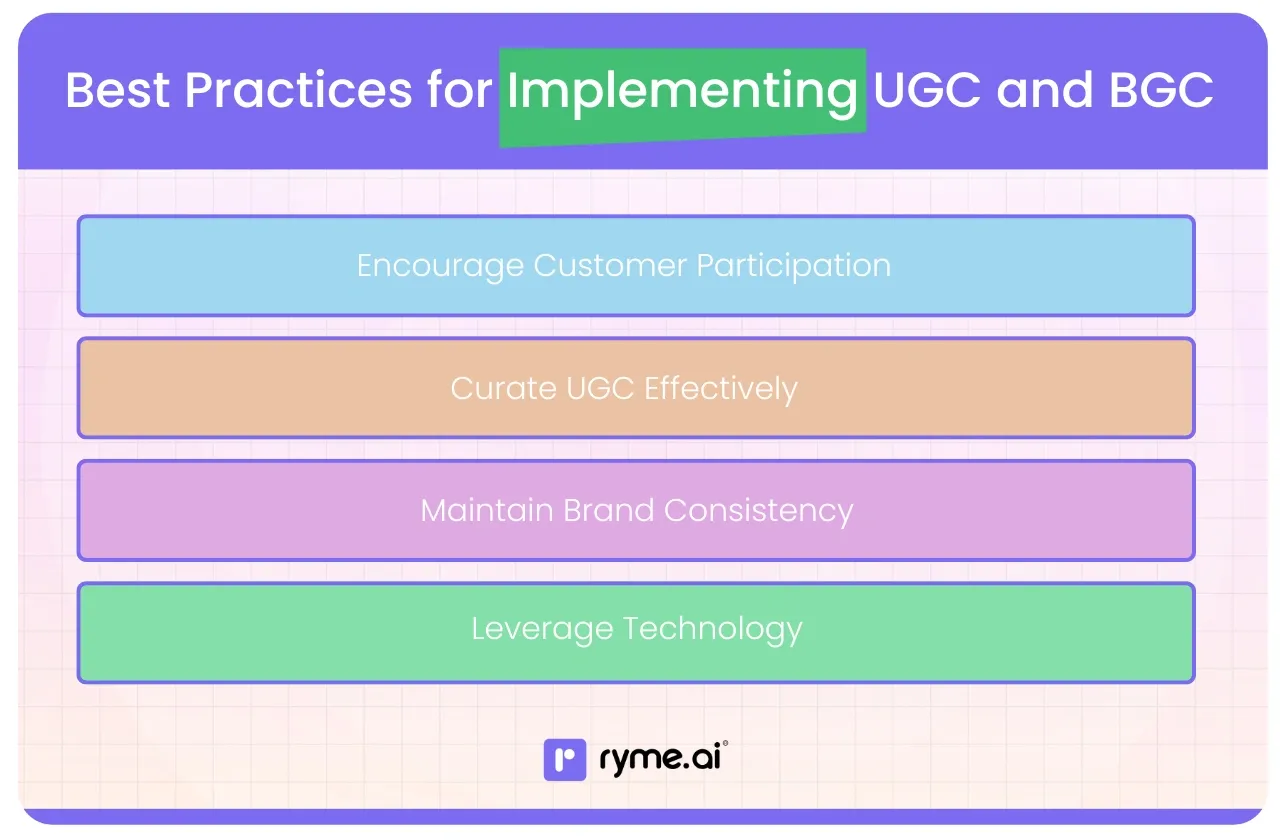
1) Encourage Customer Participation (Make it Fun and Easy! 🎉):
- Create a Branded Hashtag: Come up with a unique and catchy hashtag for your brand (e.g., #MyBrandStory) and encourage customers to use it.
- Run Contests & Giveaways: Offer a prize for the best photo or video featuring your product. This is a powerful incentive.
- Simply Ask!: Add a call-to-action in your bio or on your posts: "Show us how you use our products! Tag us @YourBrand and use #YourHashtag to be featured."
2) Curate UGC Effectively (Be Picky, in a Good Way! 👌):
- Get Permission: Always send a direct message or comment on the post asking for permission to share. A simple, "Hey! We love this photo. Would you mind if we featured it on our page with credit to you?" works perfectly.
- Choose High-Quality Content: Select UGC that is well-lit, clear, and aligns with your brand's aesthetic.
- Prioritize Authenticity: Look for content that tells a real story or shows genuine emotion.
3) Maintain Brand Consistency (Keep Your Vibe Alive! ✨):
Even when using UGC, your feed should feel cohesive. Edit the UGC slightly (with permission!) to fit your brand’s colour palette or apply a consistent filter. This ensures that your overall grid looks professional and intentional. For brands struggling with this, understanding the challenges of user-generated content can provide valuable insights.
4) Leverage Technology (Your Smart Helper! 🤖):
Manually tracking hashtags and managing permissions for a large volume of UGC is nearly impossible. Use a platform like ryme.ai to aggregate, manage, and get rights for UGC, saving you countless hours.
Instagram: A Playground for UGC and BGC Synergy
Instagram is the perfect platform to blend UGC and BGC seamlessly.
Why Instagram is a Goldmine:
Its visual-first nature makes it ideal for showcasing both beautiful brand imagery and authentic customer photos. Plus, its features are built for interaction and community building.
Using Instagram Features for a Hybrid Strategy:
- Feed Posts: Alternate between professional BGC photos and high-quality, curated UGC. Use the collaboration feature to co-author posts with creators, sharing the content with both your audiences.
- Instagram Reels: Create polished, on-trend Reels (BGC) to explain product features. Then, repost Reels from customers using your product in creative ways (UGC). (Imagine a Reel from a skincare brand showing the product's texture, followed by a user's Reel showing their "before and after" results.)
- Instagram Stories: Stories are perfect for raw, behind-the-scenes BGC. They are also the best place to share tons of UGC. Create a "Customer Love ❤️" highlight on your profile to permanently showcase tagged stories.
- Guides: Create an Instagram Guide titled "Our Community's Favourite Looks" and compile top UGC posts into a single, shareable resource.
Conclusion
The debate of User-Generated Content vs. Brand-Generated Content isn't about choosing a winner. It's about building a partnership. BGC lays the groundwork with professionalism and clear messaging, while UGC injects your brand with the unbeatable power of authenticity and trust.
By embracing a hybrid strategy, you create a more engaging, trustworthy, and relatable brand. You stop talking at your audience and start building a community with them. And with powerful tools like ryme.ai, managing this dynamic strategy has never been easier.
User-Generated Content vs. Brand-Generated Content FAQs
1) What is the difference between BGC and UGC?
Brand-Generated Content (BGC) is content created and controlled by the brand itself (e.g., professional ads, website copy). User-Generated Content (UGC) is any content created by unpaid users, customers, or fans (e.g., customer reviews, Instagram posts).
2) What is the difference between UGC and CGC?
There is often no difference; the terms are used interchangeably. CGC stands for Customer-Generated Content and is a more specific term for UGC created by actual customers of a brand. All CGC is UGC, but not all UGC is from paying customers (it could be from fans).
3) What is the difference between UGC and PGC?
PGC stands for Professionally-Generated Content. BGC is a type of PGC. However, PGC can also refer to content created by professional media houses or publishers that isn't directly from the brand. UGC, by contrast, is created by amateurs or everyday users.
4) What is the difference between user-generated content and brand-generated content in influencer marketing?
In influencer marketing, brand-generated content would be a strict script or exact visual concept given to an influencer to post. User-generated content (in this context, often called Influencer-Generated Content or IGC) is when a brand gives an influencer creative freedom to create content in their own authentic style. This IGC performs much better as it feels more like a genuine UGC post to their followers. Want to earn from your influence? See how much you can make with 10k followers in India.
5) What is the difference between UGC and branded content?
UGC is organic content created by users without payment. "Branded content" (or a "paid partnership") is content that an influencer or creator is paid to produce for a brand. While it's created by a user, its primary purpose is advertising, and it must be disclosed as such.
User Generated Content vs Brand Generated Content: Key Takeaways
Feeling motivated? Here’s a quick checklist to get you started on supercharging your content strategy with UGC and BGC:
Understanding & Strategy:
✅ Clearly Define Roles: Understand what UGC (authenticity, engagement) and BGC (control, official messaging) will primarily do for your brand.
✅ Set Goals: What do you want to achieve with your content mix? (e.g., Increase trust by X%, boost engagement by Y%, gather Z pieces of UGC per month).
✅ Identify Your Audience: Who are you trying to reach? This will influence the type of UGC you encourage and the BGC you create.
UGC - Get Your Customers Involved:
✅ Create a Unique Hashtag: Make it short, memorable, and relevant to your brand. Put it everywhere!
✅ Launch a UGC Campaign/Contest:
Theme? Prize (₹₹₹, product, feature)? Clear instructions?
Promote it across all channels (social media, email, website).
✅ Ask for Reviews: Set up automated emails post-purchase asking for reviews on your site or third-party platforms.
✅ Develop a Permission Protocol: How will you ask for rights to use UGC? (DM template, formal agreement for bigger uses). Always credit creators!
✅ Curate & Showcase: Regularly check your hashtag/mentions. Select the best UGC and plan where to feature it (Instagram feed, Stories, website, emails).
BGC - Keep Your Brand Voice Strong:
✅ Content Pillars: Define 3-5 key themes your BGC will consistently cover to provide value.
✅ Maintain Brand Guidelines: Ensure your BGC (and how you frame UGC) is consistent in tone, style, and visuals.
✅ Plan Your BGC Calendar: Schedule key BGC pieces like blog posts, product launch info, and campaign announcements.
The Hybrid Mix & Optimization:
✅ Integrate Strategically: Plan how UGC and BGC will appear together. (e.g., UGC photos in BGC-designed email templates, UGC testimonials on BGC product pages).
✅ Leverage Technology:
- Explore platforms like ryme.ai to streamline influencer discovery, UGC management, and campaign analytics – especially their zero commission and no minimum budget features if you're starting out or want to optimize costs.
- Use social listening tools.
✅ Track & Analyze: Monitor engagement, reach, conversions, and sentiment for both UGC and BGC. What’s working best?
✅ A/B Test: Experiment with different calls to action for UGC, and different formats for BGC.
✅ Listen to Feedback: Pay attention to what your audience responds to and adjust your strategy.
